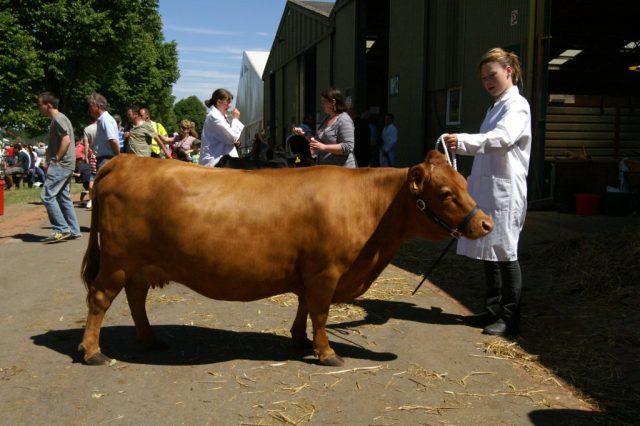Type the name of the breed you're looking for below
[wpdreams_ajaxsearchlite] Don't see the breed your're looking for? Click here and let us know!
Dexter cattle
| Place of Origin | Great Britain |
| Origin | The native home of the Dexter is in the southern part of Ireland where they were bred by small holders and roamed about the shelterless mountainous districts in an almost wild state of nature. The origin of the Dexter is quite obscure. The common assumption has been that this breed is a cross between the Kerry and some other breed, perhaps the Devon. It has also been claimed that a "Mr. Dexter," who was agent to Lord Hawarden, is responsible for this Irish breed. The introduction of the Dexter to America probably occurred long ago, when no discrimination was made between Kerry and Dexter in importations. The first recorded knowledge of Dexters in America is when more than two hundred Dexters were imported to the United States between 1905 and 1915. A large percentage of these were imported to Elmendorf Farm (Elmendorf herd) of Kentucky, Howard Gould (Castlegould herd) of New York, and James J. Hill (North Oaks herd) of Minnesota. In 1917, the Castlegould herd was sold to Daniel Guggenheim of Port Washington, who changed the herd name to Hempstead House. Several years later, a part of the Hempstead herd was sold to Mrs. Louisa Satterlee (Dover House Farm) of Greenwich, Connecticut. Two of our present herds got their Dexters directly from the above mentioned herds. Foundation stock for the Clove Brook herd (now owned by Jan van Heerden, son-in-law of Mabel Ingalls) was obtained from Mrs. Ingalls' mother, Mrs. Louisa Satterlee. The foundation for the Peerless herd at Decorah, Iowa, was obtained by John Logsdon from the Elmendorf Farm, August A. Busch and James J. Hill, in 1919. Later, two bulls were obtained successively from Daniel Guggenheim, owner of Hempstead House herd. In 1944, when the Peerless herd had their first public sale, the herd numbered 150 head of cows and heifers. Peerless herd is the oldest Dexter herd in the United States. Since 1950, Mrs. Mabel Ingalls, Stewart and Frances Kellog, Edward C. Lord and Mrs. Margaret Rhodes have imported several head of Dexters from England. A number of these and their offspring have been sold to other breeders. In 1982, Mrs. Doris Crowe of Canada imported several head from England and sold several head to interested new parties. In recent years there has been a worldwide surge of interest in Dexter cattle. These gentle, hardy and easy to handle animals are one of the world's smallest bovines. They require less pasture and feed than other breeds. They thrive in hot as well as cold climates and do well outdoors year round, needing only a windbreak, shelter and fresh water. Fertility is high and calves are dropped in the field without difficulty. |
| Purpose | They are dual purpose, being raised for both milk and meat. |
| Appearance | Most Dexters are solid black. Red or dun are less common. The distinctive head is short and wide between the eyes, with straight sides. |
| Horns | Horns on cows are fine and curved forward. Bulls' horns are thick, solid, and slightly curved at the tips. |
| Cows Average Weight | 270 – 320 kg (595 - 705 lbs.) |
| Bulls Average Weight | 450 kg (992 kg) |
| Other Considerations | Once very rare in both the UK and the US, Dexters have been enjoying a resurgence in both countries, with over 4,100 Dexter cows registered in 2007 by the Dexter Cattle Society in the UK – double the figure for 2000. "With high food prices, they are actually quite an attractive option if you like producing your own food,” said Sue Farrant, owner of four Dexters. "Both my husband and I have full-time jobs so we're keeping them on the side as an interest. They do largely look after themselves and they've been hugely popular with the children." The popularity of Dexters has been fuelled by a desire for organic food, health concerns over factory farming, and soaring food prices. "The government has no interest in where our food comes from or how it tastes, so it's nice to set your own welfare and quality standards,” said poet and songwriter Pam Ayres, who has a small herd of Dexters on her 20-acre (81,000 m2) Cotswolds property. "If you've got a bit of land, a breed like the Dexter can work out a lot cheaper than the supermarket, plus they do a pretty good job of mowing the lawn." |



